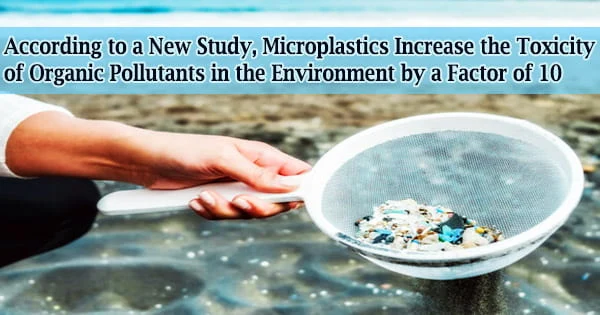Microplastics are small plastic particles, as the name implies. They are officially described as polymers with a diameter less than five millimeters (0.2 inches) smaller than a normal pearl used in jewelry. It can arise from a variety of places, including bigger bits of plastic waste that break down into smaller and smaller fragments.
Microplastics absorb and concentrate hazardous organic chemicals in the marine environment, increasing their toxicity by a factor of ten, according to a recent study by Tel Aviv University experts, which could have a serious impact on human health.
Dr. Ines Zucker of Tel Aviv University’s School of Mechanical Engineering and Porter School of the Environment and Earth Sciences, along with Ph.D. student Andrey Eitan Rubin, undertook the research.
The research was published in the journal Chemosphere recently. Scientists are still debating whether or not eaten microplastics are damaging to human or animal health, and if so, what specific risks they may represent. Despite this, several governments are working to limit the amount of microplastics in the environment.
Plastic materials with a configuration of particles and microscopic fibers the size of tens of microns and up to a few millimeters are referred to as microplastic. Microplastics can be discovered practically anywhere: in wells, soil, food, water bottles, and even in the North Pole’s glaciers.
The researchers add that because plastic is not a natural substance, it decomposes slowly in nature, sometimes taking thousands of years, and the same microplastics are generated as a result of this process.
During the process, the microplastic particles come into contact with environmental pollutants, which adhere to their surface, and the two together may constitute a harm to the environment and human health.
In this study we showed that even very low concentrations of environmental pollutants, which are non-toxic to humans, once adsorb to the microplastic result in significant increase in toxicity. This is because microplastics are a kind of ‘magnet’ for environmental pollutants, concentrating them on its surfaces, ‘ferrying’ them through our digestive tract, and releasing them in a concentrated form in certain areas thus causing increased toxicity.
Dr. Ines Zucker
The researchers looked at the complete process that the microplastic goes through, from its interactions with environmental contaminants to the pollutants’ release and formation of heightened toxicity.
Adsorption of those organic contaminants to microplastics boosts toxicity by a factor of ten, according to the researchers, and may have serious consequences for humans exposed to contaminated food and drink.
Dr. Zucker explains: “In this study we showed that even very low concentrations of environmental pollutants, which are non-toxic to humans, once adsorb to the microplastic result in significant increase in toxicity. This is because microplastics are a kind of ‘magnet’ for environmental pollutants, concentrating them on its surfaces, ‘ferrying’ them through our digestive tract, and releasing them in a concentrated form in certain areas thus causing increased toxicity.”
Ph. D. student Andrey Eitan Rubin adds:
“For the first time we are presenting a complete ‘life cycle’ of microplastics: from the moment of their release into the environment, through the adsorption of environmental pollutants and up to their joint toxicity in humans. The amount of waste dumped into the ocean every year is enormous the best known example is the plastic island in the Pacific Ocean, which has an area 80 times larger than the State of Israel.”
“But this is not just a remote problem from our preliminary monitoring data show that Israel’s shores are among the most polluted with microplastic waste. Each of the microplastic particles secreted in these areas has tremendous potential for harm as they serve as an effective and stable platform for any pollutant that they may encounter on their way to the human body.”
Dr. Zucker concludes: “We have found that the adsorption capacity of an oxidized microplastic particle (the configuration of the microplastic after undergoing environmental weathering) is significantly higher than a non-oxidized particle. After the environmental pollutants adsorb to the microplastic, the pre-loaded particle may reach the digestive tract through the ingestion of contaminated food and water where it releases the toxins in close proximity to the cells of the digestive tract, thus increasing the toxicity of these substances.”
“This is another painful reminder of the dire consequences of polluting the marine and terrestrial environment with hazardous industrial waste, which has unfortunately been saturated with plastic in recent decades. The dangers are not theoretical but are more tangible than ever. Although there is a great deal of awareness of this problem, the preventive measures in the field are still far from imprinting a significant mark.”





